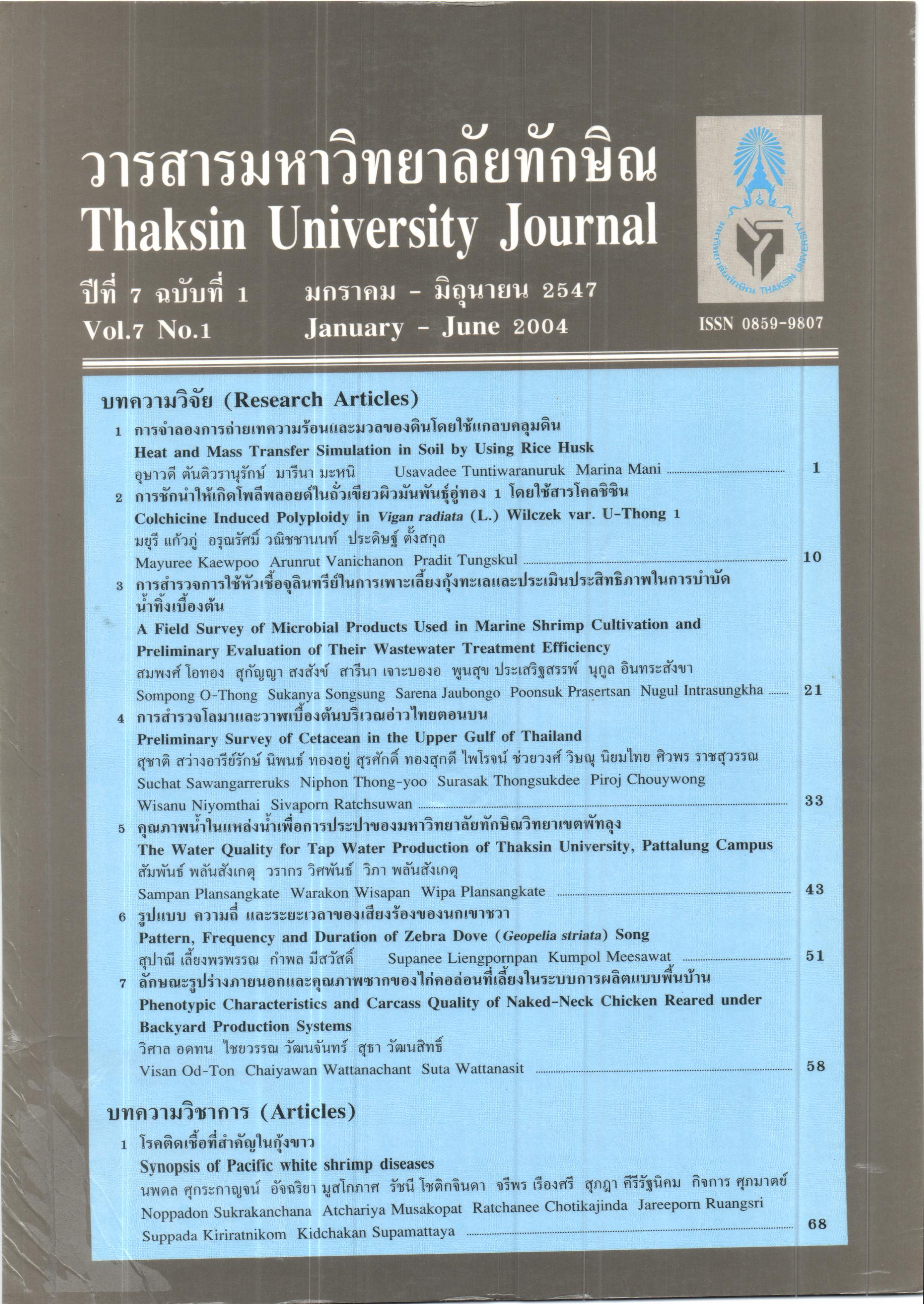การสำรวจการใช้หัวเชื้อจุลินทรีย์ในการเพาะเลี้ยงกุ้งทะเลและประเมินประสิทธิภาพในการบำบัดน้ำทิ้งเบื้องต้น
Main Article Content
Abstract
The aims of this study were documented the use of microbial products from shrimp farmers in Songkhla and Nakhonsithamarat province, to thier treatment efficiencies from shrimp aguaculture in from of Chemical Oxygen Demand (COD) and enumerate the composition of microorganisms in microbial products. Interviews were conducted with 66 shrimp farmers in the two major shrimp producing regions. It was found that farmer in the study used on average 59 different commercial microbial products. The results indicated that most shrimp farmers commonly treated shrimp pond water prior to and during the cultivation by using microbial products was 82% and not use was 18% of investigated farmers, respectively. It was found that the microbial products were used in three main purposes, namely for water treatment, feed additive as probiotic and for both purposes were 66 %, 24% and 10%, respectively. These product labels were indicated the composition of microorganisms comprising of Bacillus spp, lactic acid bacteria, nitrifying bacteria, denitrifying bacteria, yeast and fungi were following 54%, 17%, 10%, 4%, 8% and 3% of overall microbial products, respectively. Bacillus species were the most commonly bacteria found in microbial products, which consist of Bacillus subtilis 45%, B. licheniformis 16%, B. megaterium 11%, B. polymyxa 8% of overall microbial products and other few Bacillus spp. For the microorganism enumeration results was found microorganisms comprising lower than product label information. It was also found the amount of bacteria, yeast and actinomycetes in overall microbial products were 2.0 x 106 - 8.0 x 106, 103 - 6.0 x 105 and 103 - 9.0 x 103 cfu/g, respectively. Evaluation microbial product efficiencies were found that mostly commercial microbial products have shown low treatment efficiencies for shrimp ponds water improvement.
Article Details
Section
Research Articles

